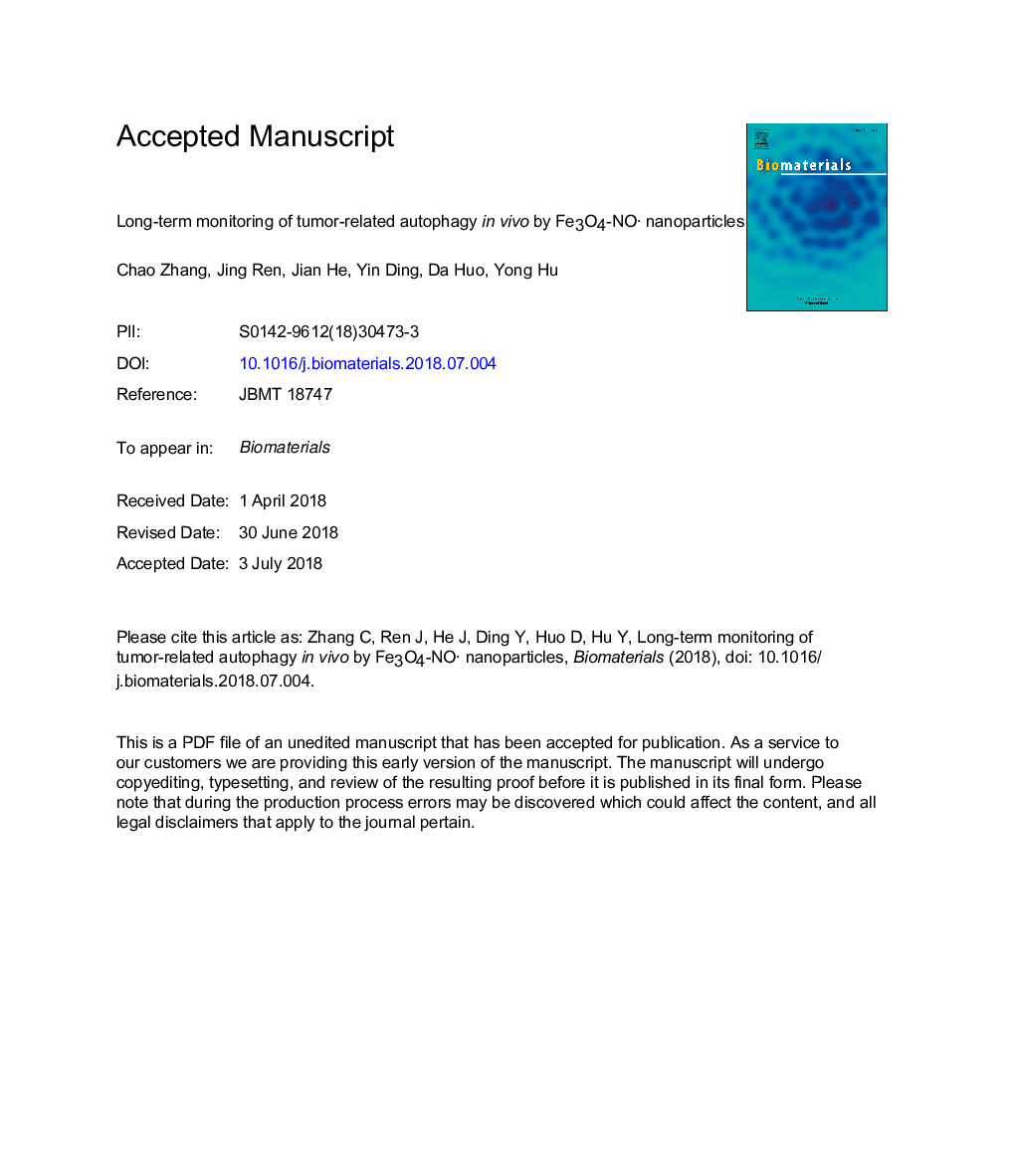| Article ID | Journal | Published Year | Pages | File Type |
|---|---|---|---|---|
| 6484356 | Biomaterials | 2018 | 34 Pages |
Abstract
In vivo read-out of autophagy is of great therapeutic and fundamental significance, and yet being conducted exclusively in high cost transgenic animal models. As an attempt to readily monitor the autophagy flux, we herein proposed an autophagy-responsive magnetic resonance imaging based on radical-conjugated magnetic nanoparticles. In principle, both the NO· radical and Fe3O4 nanoparticles are stable, and separately contributing to an observation of enhanced T1-and T2-weighted imaging, respectively. Meanwhile, the onset of autophagy concomitantly simulates the mass production of reactive species, and consequently quenches the T1-signal of NO·. On this basis, the content of autophagy flux is reflected by the ratio of T1-signal intensity to that of T2-signal, which is condition-insensitive, as a function of time. Assisted with such strategy, an unprecedented protection role autophagy played in respond to heat stress has been revealed, through which the killing effect of magneto-hyperthermia was greatly impeded. Furthermore, we noticed that the impairment of autophagy through the sequential chemotherapy, can markedly improve the therapeutic outcome, in a manner monitored and thoroughly analyzed using the strategy reported herein. We therefore believe that such a study offers a feasible method for in vivo read-out of autophagy and gives us insights how autophagy influences the therapeutic index of cancer treatments.
Related Topics
Physical Sciences and Engineering
Chemical Engineering
Bioengineering
Authors
Chao Zhang, Jing Ren, Jian He, Yin Ding, Da Huo, Yong Hu,
